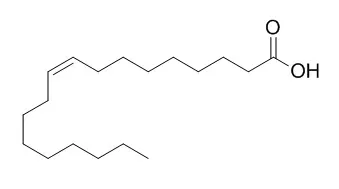In mosquito control programs, botanical origin may have the potential to be used successfully as larvicides.
METHODS AND RESULTS:
The larvicidal activity of crude acetone, hexane, ethyl acetate, methanol, and petroleum ether extracts of the leaf of Centella asiatica Linn., Datura metal Linn., Mukia scabrella Arn., Toddalia asiatica (Linn.) Lam, extracts of whole plant of Citrullus colocynthis (Linn.) Schrad, and Sphaeranthus indicus Linn. were assayed for their toxicity against the early fourth instar larvae of Culex quinquefasciatus (Diptera: Culicidae). The larval mortality was observed after 24 h exposure. All extracts showed moderate larvicidal effects; however, the highest larval mortality was found in whole plant petroleum ether extract of C. colocynthis. In the present study, bioassay-guided fractionation of petroleum ether extract led to the separation and identification of fatty acids; Oleic acid and linOleic acid were isolated and identified as mosquito larvicidal compounds. Oleic and LinOleic acids were quite potent against fourth instar larvae of Aedes aegypti L. (LC50 8.80, 18.20 and LC90 35.39, 96.33 ppm), Anopheles stephensi Liston (LC50 9.79, 11.49 and LC90 37.42, 47.35 ppm), and Culex quinquefasciatus Say (LC50 7.66, 27.24 and LC90 30.71, 70.38 ppm).
CONCLUSIONS:
The structure was elucidated from infrared, ultraviolet, 1H-nuclear magnetic resonance, 13C-NMR, and mass spectral data. This is the first report on the mosquito larvicidal activity of the reported isolated compounds from C. colocynthis. |






 Cell. 2018 Jan 11;172(1-2):249-261.e12. doi: 10.1016/j.cell.2017.12.019.IF=36.216(2019)
Cell. 2018 Jan 11;172(1-2):249-261.e12. doi: 10.1016/j.cell.2017.12.019.IF=36.216(2019) Cell Metab. 2020 Mar 3;31(3):534-548.e5. doi: 10.1016/j.cmet.2020.01.002.IF=22.415(2019)
Cell Metab. 2020 Mar 3;31(3):534-548.e5. doi: 10.1016/j.cmet.2020.01.002.IF=22.415(2019) Mol Cell. 2017 Nov 16;68(4):673-685.e6. doi: 10.1016/j.molcel.2017.10.022.IF=14.548(2019)
Mol Cell. 2017 Nov 16;68(4):673-685.e6. doi: 10.1016/j.molcel.2017.10.022.IF=14.548(2019)